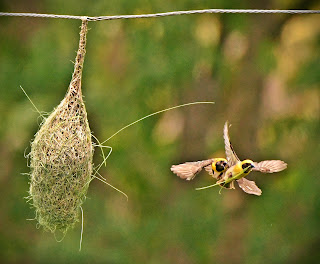THE WILDLIFE WHISPERER
(PART 4 – Conservation)
In my jungle forays I started witnessing that jungles and jungle safaris were managed differently. The rules of entry and exit, the training of naturalists, the involvement / buy-in of local communities, and the comfort of tourists had tremendous variations. Some forests were thriving with species and tourists, while others were thriving with species but had few tourists. My first idea, two years ago, was of floating a naturalist exchange programme, from different forests, for cross-learning purposes. I felt privileged that I get to visit multiple parks, but so many of the excellent naturalist did not have similar kind of opportunity, when they would benefit so much more from these visits. Couple of conversations later I realised that the Ministry of Environment and Forest (MoEF) did have a similar programme, challenge as always was in its execution.
Two further ideas that I deliberated upon was the provision of basic benefits to the bottom of the pyramid in forest department, and solar fencing of the forest to minimise human animal conflict. The ideas emerging out of observations and conversations during my multiple trips to different forests.
The forest guards, watchers and the daily wagers, all of whom are at the frontlines in the forest are in the line of danger on a regular basis, but unprotected in life and after death, so medical and term insurance is crucial for them. Similarly, with encroachment of humans on wildlife spaces, especially buffer areas, there are increased instances of tigers, leopards, bears, elephants wandering off into human settlements and killing cattle, which is a financial loss to humans and a habit loss for animals. Additionally, there is always a danger of wild animals harming human beings, so a solar fencing I thought would be a non-dangerous deterrent. I realised that the solar fencing idea got piloted in one forest, and the insurance part fell under the ambit of the Ministry of Environment, Forest and Climate Change.
Through my visits I came across wonderful local groups doing niche work in and around different forests. From distributing winter clothes, to conserving local arts and crafts and developing a market for it, to distributing branded jackets, caps, solar lamps and water filters, to making events carbon neutral. Every effort was commendable in its own way. A special salute to all these dedicated, committed volunteers for their selfless zeal. These efforts however felt like patchwork, on a fabric that was tearing away. I felt that we needed to plan and implement interventions at a much larger scale, and interventions that are sustainable. With this thought in mind I felt that businesses needed to step in.
Why businesses, you may ask? The simple and straight answer is that for me businesses have always been at the core of change, because having engaged with them at the Global Compact Network India for the last 9 years, I realise that they have the knack to think out of the box, the appetite to take risks, and the resources to put behind their ideas. However, they needed to be an integral part of biodiversity conservation from need assessment, to planning, to implementation and monitoring.
My first attempt of working with business was to explore a solution for the menace of lantana weed that was destroying / eating up the forest from within. And I discussed this with one of the Global Compact business members, who immediately said that they would check with their scientists for an effective antidote. The traditional pace of weeding out the lantana was time and resource intensive and pesticides did more harm than good. A couple of months down the line though, while we explored alternatives and discussed herbicides, we realised that even the herbicide could have side effects. So, this effort was parked for later.
This exercise however brought me in close connect with scientists / academicians / forest officials from different states. All working on a similar agenda, through their own expertise. And I wondered if different experts could work together for a common cause. The interest and agreement were all there, but rolling out a collective action strategy required a platform, and we at the Global Compact Network India (GCNI) were best placed to be the facilitative platform.
With this thought GCNI, in partnership with VNV Advisory, curated three consultations across Delhi, Bengaluru and Mumbai to explore the formation of a Business Biodiversity Alliance for India (BBAI). More on that in the next blog.
For now, sharing few pics of the amazing diversity that we in India are privileged to have, of deserts and mangroves, meadows and thick forests, rocky hills and sloping hilly grasslands, and rivers and lakes. Seeing is believing,












Comments
Post a Comment